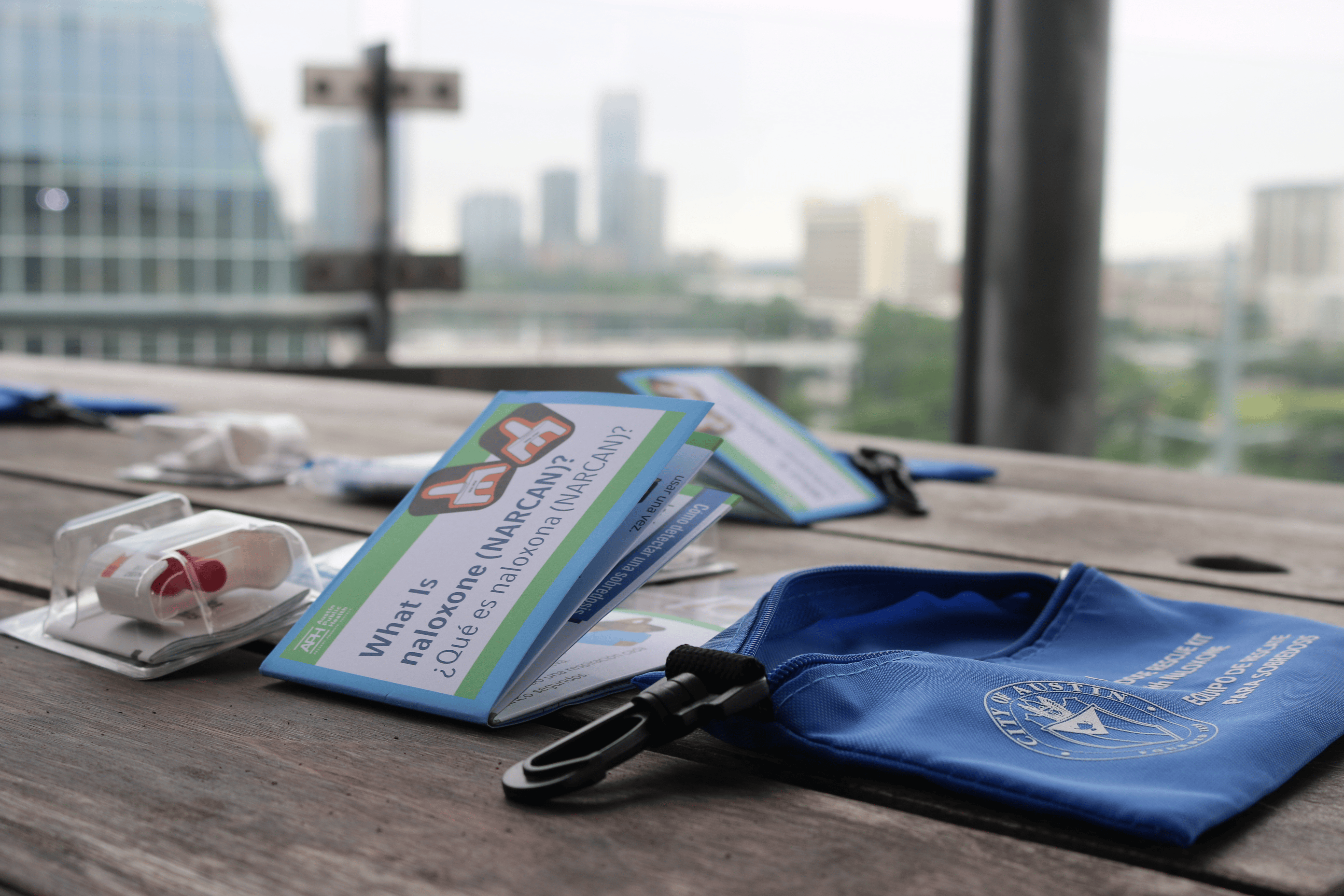
In 2024, 380 people died from unintentional drug overdose in Travis County.
AUSTIN, Texas – August 31 marks International Overdose Awareness Day, a global effort to end overdose. Austin Public Health (APH) and Austin-Travis County EMS (ATCEMS) are coming together on this day to raise awareness of the opioid overdose epidemic and highlight resources available to Austinites.
“The decline we’ve seen in overdose deaths proves that in Austin, we keep each other safe,” said Austin-Travis County Health Authority Dr. Desmar Walkes. “We can’t let our guard down now – work must continue so we can save as many lives as possible from this epidemic.”
Learning how to recognize and respond to an overdose will save a life. APH and ATCEMS offer free onsite “Breathe Now” training, a 45-minute session that trains participants with essential knowledge on recognizing opioid overdoses, administering life-saving naloxone, and responding effectively in critical situations. Participants will also be provided with naloxone rescue kits.
Learn how to request an in-person training here. Information on an upcoming virtual training session can be found here.
“We’ve done a lot of great work preventing overdoses in Austin, but there’s more work to do, because even one life lost is too many,” said ATCEMS Chief Robert Luckritz. “Today is about strengthening our commitment to prevention, treatment, and recovery. Together, we can break the stigma and save lives.
Experts recommend everyone learn these important ways to spot and prevent opioid overdoses:
- Carry naloxone and let everyone know, just in case.
- Don’t use any drug alone or behind a locked door.
- Signs of overdose include small pupils, decreased responsiveness/mental status and slow to no breathing. Free posters with this information can be ordered here.
- If you find someone who has signs of an overdose, even if you are not sure, use naloxone and start basic life support to resuscitate them. Call 911 since fatal opioids usually last longer than intranasal naloxone (about 90 minutes) and a person who has overdosed will need continuing care.
To learn more about how you can recognize and prevent opioid overdoses, please visit stopoverdoseatx.org.

